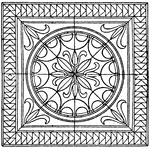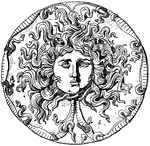
Farnese Medusa Head Dish
The Farnese Dish Medusa Head is an onyx patera, or black dish. It is a Roman design.
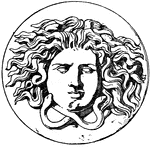
Antique Patera Medusa Head
The Antique Patera Medusa Head design comes from the center of a dish. It is a Roman design.
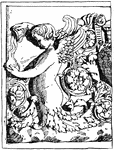
Half-Figure Roman Relief
The Half-Figure Roman Relief is a design of a half-figure human body with a lower half that has a scroll…
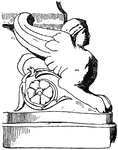
Roman Sphinx
The Roman Sphinx is the bust of a woman with wings and the body of a lion. This design was found in…

Parallel Fret Band
The parallel fret band is a pattern that is parallel in perspective that was found in a Roman mosaic…

Roman Egg-and-Dart Moulding
The Roman egg-and-dart moulding is an egg pattern with darts in between.
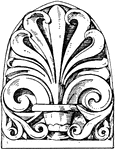
Roman Antefix
The Roman antefix is is found in the temple of Jupiter Stator in Rome, Italy. This design is found on…
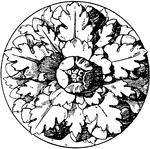
Roman Rosette
The Roman rosette is an artificial rose with five divisions. It is typically found on furniture, gates,…
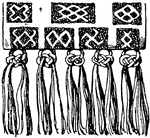
Medieval Maniple Valence
The medieval maniple valence is an embroidered band of silk that is typically worn by priests in the…

Part of Shaft Foliated
The part of shaft foliated is a Roman state-candelabrum that is made out of marble. It is found at the…

Roman Base
This Roman base is a design found in the Capitalone museum of Rome, Italy. It is a design of leaves…

Roman Base
This Roman base is found in the Temple of Concord in Rome, Italy. It is a natural method of decoration,…
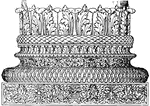
Roman Base
This Roman base is found in the Baptistery of Constantinople, Rome, Italy. It is a natural method of…
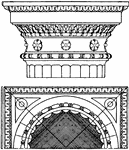
Roman-Doric Capital
The Roman-Doric capital is an antique design. It is found on the upper termination of a column.
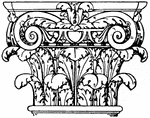
Roman Composite Capital
The Roman composite capital is a fusion of the ionic and corinthian capitals.
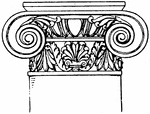
Roman-Ionic Capital
The Roman-ionic capital is a design of a scroll rolled on both sides with spiral curves. It has an added…
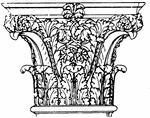
Roman Corinthian Capital
The Roman Corinthian capital is found in the palaces of the emperors in Rome. It is a design of spiral…
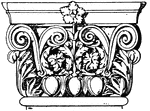
Roman-Corinthian Pilaster Capital
The Roman-Corinthian pilaster capital has an egg-and-dart moulding that runs along the bottom, then…

Roman-Corinthian Pilaster Capital
The Roman-Corinthian pilaster capital has an egg-and-dart moulding that runs along the bottom, then…

Roman-Corinthian Pilaster Capital
The Roman-Corinthian pilaster capital has a leaf and floral design, then it volutes with a spiral scroll…
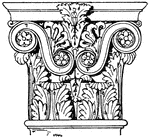
Roman-Corinthian Pilaster Capital
The Roman-Corinthian pilaster capital has a leaf and floral design, then it volutes with a spiral scroll…
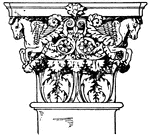
Roman-Corinthian Pilaster Capital
The Roman-Corinthian pilaster capital has a leaf and floral design, then it volutes with a spiral scroll…
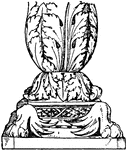
Roman Candelabrum Base
The Roman candelabrum base is encircled with leaves and lion's claws as feet.

Roman Candelabrum Shaft
The Roman candelabrum shaft is a design made out of marble. It is richly decorated with foliage and…

Roman Candelabrum Shaft
The Roman candelabrum shaft is a design made out of marble. It is richly decorated with foliage and…
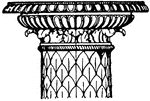
Roman Candelabrum Capital
The Roman candelabrum capital is made out of marble and terminates with a plate or table on top.
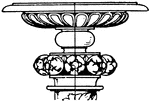
Renaissance Candelabrum Capital
The Renaissance candelabrum capital is made out of marble and terminates with a plate or table on top.…
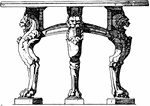
Three-Legged Table Trapezophoron
The three-legged table trapezophoron is a Roman design . The legs of the table are made out marble and…

Roman Table Support Trapezophoron
The Roman table support Trapezophoron is a marble design of a lion head and claw.

Support of Roman Table Trapezophoron
The support of Roman table Trapezophoron is a shown in the front view and side view. It is found in…

Roman Table Support Trapezophoron
The Roman table support trapezophoron is a marble design of a Lynx head and claw.
Roman Table Support Trapezophoron
The Roman table support trapezophoron is a marble design of a Lynx head and claw.
Roman Table Support Trapezophoron
The Roman table support Trapezophoron is a marble design of a panther head and claw.

Roman Table Support Trapezophoron
The Roman table support Trapezophoron is a marble design of a panther head and claw.
Roman Table Support Trapezophoron
The Roman table support Trapezophoron is a marble design of a lion head and claw.
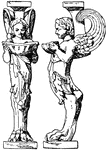
Roman Table-Support Trapezophoron
The Roman table-support trapezophoron is shown from the front view and side view. It is made out of…
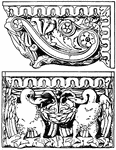
Roman Console
This Roman console is shown in the front and side view. It is a design that includes two decorative…
Roman Console
This Roman console is shown in its front and side view. It is found in the Temple of Jupiter Stator…

Roman Console
This Roman console is shown in its front and side view. It is found in the Vatican, Rome, Italy.
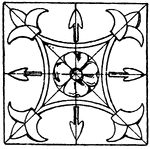
Roman Square Panel
The Roman square panels is an 1879 bas-relief design found near the Tiber river in Rome, Italy. This…
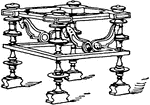
Roman Bisellium Stool
The Roman Bisellium Stool also called the Roman double stool, was made of bronze but did not have a…
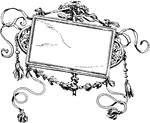
German Typographical Frame
This German Typographical frame is a tablet from the triumphal entry of the Emperor Maximilian. It was…

Roman Earring
The Roman earring is light in weight, usually made out of precious metals, in sheet or wire filigree.
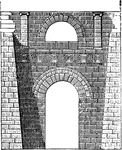
Etruscan Arch at Perugia
In these Etruscan buildings traces are to be found of the arch; as, for instance, in the Gate of Volterra…
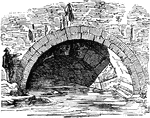
The Cloaca Maxima at Rome
In these Etruscan buildings traces are to be found of the arch; as, for instance, in the Gate of Volterra…
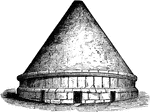
Tumuli
The most interesting monuments of Etruscan architecture which have been preserved are the tombs. They…
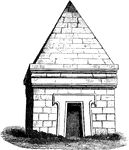
Etruscan Tomb at Castel d'Asso
The most interesting monuments of Etruscan architecture which have been preserved are the tombs. They…
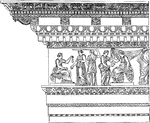
Corinthian Entablature from the Nerva at Rome
Simple styles, such as the Doric, which accorded so intimately with the whole disposition of the Grecian…
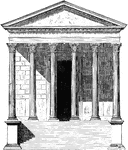
Maison Carrée
The Maison Carrée at Nîmes in southern France is one of the best preserved temples to be…
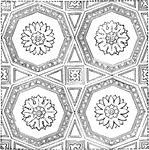
Ornament of a Vaulted Roof
Roman arches were, as a rule, ornamented with sunken panels of various shapes, in which were introduced…

Ornament of a Vaulted Roof
Roman arches were, as a rule, ornamented with sunken panels of various shapes, in which were introduced…
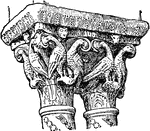
Romanesque Capitals
An illustration of a Romanesque capitals from the cloister of Monreale near Palermo, Sicily. In several…
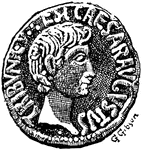
Dupondius, Obverse
The obverse side of the dupondius, "a Roman bronze coin, of the value of 2 asses." -Whitney, 1911
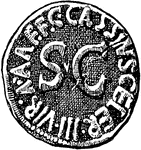
Dupondius, Revers
The reverse side of the dupondius, "a Roman bronze coin, of the value of 2 asses." -Whitney, 1911



